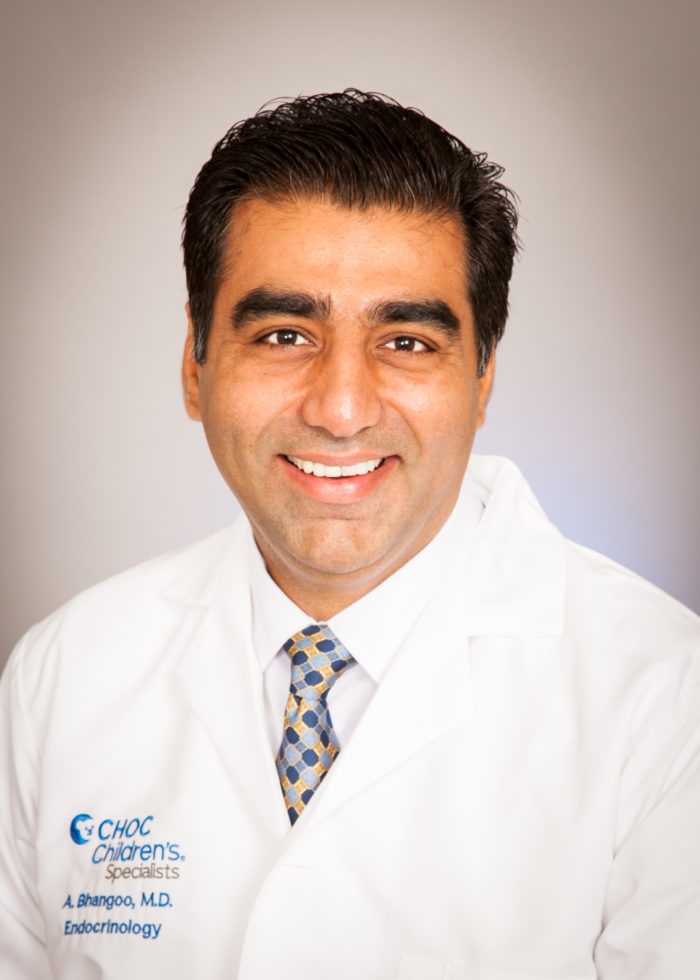
Criteria for evaluating and treating a short statured child, and the
ability to understand growth hormone resistance and treatment with insulin-like growth factor-1 (IGF-1) are among the topics featured at an upcoming CHOC conference. We spoke with Dr. Amrit Bhangoo, pediatric endocrinologist, about what guests can expect on March 19.
What is the importance of the “Growth and Growth Disorders in Children” conference?
This conference will give pediatricians, family medicine physicians, nurse practitioners, physician assistants and other pediatric health care providers a unique opportunity to learn about short stature. CHOC’s endocrine team will share our experiences working with pediatric patients with short stature, both from the primary care providers’ role and the endocrine specialists’ role. In addition, we will discuss treatment of patients with growth hormone (GH) therapy.
What excites you most about the conference?
It is exciting to be able to bring together such a diverse group of specialists with a focus to educate and share their expertise with the community. Most of the speakers at the conference are faculty members at CHOC and UC Irvine. Further, this forum provides an opportunity for community providers to interact with the endocrinologists on a more intimate level. They will be able to ask members of the endocrine team questions and learn from the clinical scenarios presented during panel discussions.
What is growth hormone deficiency (GHD) and what would you like attendees to take away from your presentation?
Growth hormone deficiency causes severe short stature in children. It is due to deficiency of growth hormone production or secretion from the pituitary gland. Prevalence is about 1 in 1,000, and it can present with multiple pituitary hormonal deficiencies and mid-line facial defects. The presentations in the conference will extensively review this condition. Additionally, we will discuss a diagnosis of precocious puberty.
What is the latest technology tied to GHD?
Technology is rapidly evolving in the treatment of GHD. Currently the only way to treat a child with GHD is to give GH injections on a daily basis, which has limitations for long-term compliance and successful outcomes. Most of the newer therapies are centered on the development of long acting GH analogs that may act to eliminate the need for daily dosing. New therapies are currently being developed and are under the FDA review process.
Is CHOC endocrinology involved in other upcoming GHD-related presentations, research or special projects?
We are involved in several studies at CHOC that are evaluating the use of growth hormone in the pediatric population. Specifically we are involved in the Novo Nordisk registry to follow up and monitor the acute and long-term side effects of GH therapy. We are also just beginning a new study with Genentech/Roche, a Phase 4 open label study on the use of GH therapy in pediatric patients with GH deficiency.
In addition to our research endeavors, we also provide monthly community education at our Orange campus through a growth lecture for those families who have been referred to us. This lecture provides a basic overview on topics surrounding normal growth from birth to adult, the evaluation of a child with short stature, and treatment options for pediatric patients.
When should a pediatrician refer a patient to an endocrinologist regarding a growth disorder?
Referral guidelines are available to our community physicians (pages 11-14) at: http://www.choc.org/wp/wp-content/uploads/referrals/Endocrinology-Referral-Guidelines.pdf
The “Growth and Growth Disorders in Children” conference will be held on March 19, from 8 a.m. to 1 p.m. at CHOC Hospital, in the Harold Wade Education Center.




